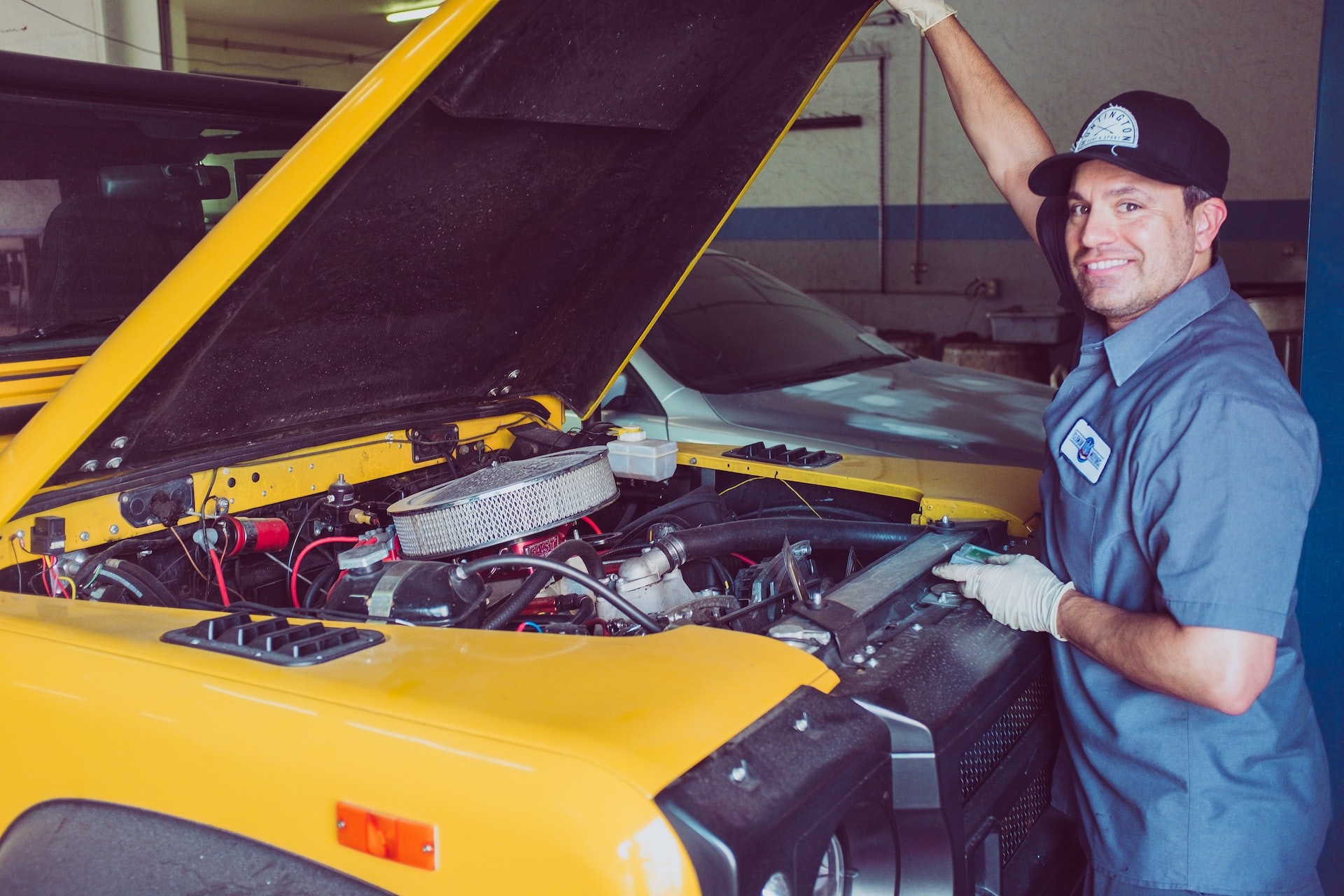Considering stepping into the auto repair industry? Buying an existing auto repair shop can be a faster route to business ownership than starting from scratch. However, understanding how to navigate the purchase process and assess the value of a shop is crucial for making a sound investment.
Just as sellers need to understand the worth of their business, potential buyers must also be savvy about valuation to ensure they are paying a fair price and setting themselves up for success. Many aspiring shop owners jump into negotiations without a solid grasp of what makes a shop valuable, potentially overpaying or missing crucial red flags.
This guide will walk you through the key steps and considerations when buying an existing auto repair shop, equipping you with the knowledge to make an informed decision and confidently take the wheel of your new business venture.
Why Buy an Existing Auto Repair Shop?
Purchasing an established auto repair shop offers several advantages over starting a new one. You’re not just buying equipment and a location; you’re acquiring a running business with built-in assets:
- Established Customer Base: One of the most significant benefits is inheriting an existing customer base. This provides immediate revenue and reduces the daunting task of building clientele from zero. A loyal customer base signals trust and reliability, valuable commodities in the auto repair industry.
- Trained Staff: Finding and training skilled technicians is a major hurdle for new shops. Buying an existing shop often means acquiring a team of experienced technicians, service writers, and support staff already familiar with the operations. This experienced team can ensure a smoother transition and maintain service quality from day one.
- Operational Infrastructure: An existing shop comes with all the necessary infrastructure in place – from bays and lifts to diagnostic tools and software. This eliminates the time, cost, and effort of setting up a fully functional workshop. You can hit the ground running without the delays and expenses of building from scratch.
- Established Reputation and Brand: A shop with a positive reputation in the community has already built trust and brand recognition. This pre-existing goodwill can significantly impact customer retention and attract new business. Leveraging an established brand is far easier than building one from the ground up.
- Immediate Cash Flow: Unlike a startup that requires time to generate revenue, an existing shop typically produces immediate cash flow. This can ease financial pressures in the initial months and provide a quicker return on investment.
Understanding Business Valuation from a Buyer’s Perspective
Just as sellers need to understand how to value their business for sale, buyers need to understand valuation to determine if the asking price is justified and to negotiate effectively. Business valuation is the process of determining the economic worth of a company. For a buyer, it’s about understanding what you’re truly paying for and if the potential return aligns with your investment.
The fair market value represents a price point that is reasonable for both buyer and seller under normal market conditions. It’s not about getting the lowest possible price, but about ensuring a fair deal that reflects the shop’s current performance and future potential. Understanding valuation helps you avoid overpaying and ensures you’re investing in a business with a solid foundation and realistic growth prospects.
Determining a Fair Price: Analyzing Seller’s Discretionary Earnings (SDE)
A key metric in valuing small businesses, especially auto repair shops, is Seller’s Discretionary Earnings (SDE). SDE represents the total financial benefit an owner-operator derives from the business. For a buyer, understanding SDE is crucial as it indicates the potential income you can expect to generate from the shop.
To assess the financial health and profitability of the shop you’re considering buying, you need to analyze the seller’s financial records, typically tax returns from the past three years. From these documents, you can calculate the Seller’s Discretionary Earnings (SDE).
Here’s how to calculate SDE from a buyer’s perspective:
-
Start with Net Income: Begin with the net income reported on the tax returns. This is the business’s profit after all expenses.
-
Add Back Owner Perks: Add back expenses that are discretionary to the owner and may not be necessary for a new owner or could be adjusted. These typically include:
- Interest Expense: Interest paid on business loans.
- Depreciation & Amortization: Non-cash expenses that reduce net income.
- Owner’s Compensation: Salary, benefits (health insurance, retirement contributions) paid to the current owner.
- Discretionary Expenses: Personal expenses run through the business, such as excessive travel, family members’ salaries not commensurate with their roles, or one-time personal expenses.
-
Normalize SDE: Adjust the SDE to reflect a realistic operating scenario for a new owner. Common normalization adjustments include:
- Rent Adjustment: If the seller owns the property, assess if the rent being charged to the business is at market rate. Adjust rent expense to reflect fair market rent – whether it’s an increase or decrease.
- Family Payroll Adjustment: If family members are on payroll, evaluate their roles and salaries. Adjust payroll expenses to reflect market rates for necessary roles and remove costs for family members not actively contributing to the business.
- One-Time Income/Expenses: Remove any non-recurring income or expenses that are not indicative of the shop’s ongoing performance, such as one-time gains from asset sales or unusual legal settlements. Similarly, remove the impact of COVID-related loans (like PPP or EIDL) from income statements for a clearer picture of normal operations.
-
Calculate Weighted Average SDE: To get a representative SDE figure, calculate a weighted average over the past three years, giving more weight to the most recent year as it best reflects current business performance. A common approach is to weight the most recent year at 50%, the second most recent at 37.5%, and the third most recent at 12.5%.
Once you have a normalized, weighted average SDE, you can apply a multiple to estimate the business value, excluding cash and inventory.
Factors to Consider When Evaluating an Auto Repair Shop for Purchase
The valuation multiple applied to SDE isn’t arbitrary. It’s influenced by various factors that affect the attractiveness and risk profile of the auto repair shop. As a buyer, carefully consider these factors:
- Revenue Size: Larger shops generally command higher multiples.
- Shops with under $1 million in gross revenue: Typically valued at a 2 – 2.5x SDE multiple.
- Shops with $1 million to $5 million in gross revenue: May range from 2.5 – 3x SDE.
- Shops exceeding $5 million in gross revenue: Can reach multiples of 3 – 3.5x or higher.
- Fleet and Commercial Accounts: Shops with established fleet or commercial accounts have a more predictable and recurring revenue stream. This reduces risk for a buyer and justifies a higher valuation. Long-term contracts with fleets are particularly valuable.
- Owner Involvement: If the current owner is heavily involved in daily operations, the business might be more dependent on their presence. A shop that runs smoothly with less owner involvement is more attractive as it suggests a robust management structure and less disruption during ownership transition. A passive ownership model often warrants a higher multiple.
- Technician Team: A skilled and stable technician team is a significant asset, especially in a labor-constrained industry. The number of technicians, their certifications (ASE, manufacturer-specific), and their average tenure all impact value. High technician retention reduces the risk of operational disruption after the sale.
- Shop Reputation and Online Reviews: A strong reputation with positive online reviews is invaluable. Check online platforms like Google, Yelp, and industry-specific review sites. Negative reviews can be a red flag and may warrant a lower valuation or further investigation.
- Location and Facility Condition: Location matters. Is the shop in a high-traffic area with good visibility? Is the facility well-maintained, or are there deferred maintenance issues? The condition of equipment, lifts, diagnostic tools, and the building itself will impact future capital expenditures.
- Equipment and Technology: Assess the age and condition of shop equipment. Is it up-to-date, or will significant upgrades be needed soon? Modern diagnostic tools and shop management software are essential for efficiency and attracting customers. Outdated equipment can reduce value.
- Financial Transparency and Records: Are the seller’s financial records well-organized and transparent? Clean and verifiable financials build trust and make due diligence easier. Lack of transparency or poorly maintained records can be a red flag.
Due Diligence: Verifying the Shop’s Health
Before finalizing the purchase, thorough due diligence is essential. This process involves verifying the information provided by the seller and uncovering any hidden issues. Key areas of due diligence include:
- Financial Due Diligence: Go beyond the seller’s provided financials. Engage your own accountant to review tax returns, profit and loss statements, balance sheets, and sales data. Verify revenue, expenses, and profitability trends. Look for consistency and any unusual patterns.
- Operational Due Diligence: Assess the shop’s operations firsthand. Observe the workflow, customer service processes, technician efficiency, and shop management practices. Evaluate the condition of equipment, inventory management, and supplier relationships.
- Legal and Compliance Due Diligence: Review all contracts, leases, permits, and licenses. Ensure compliance with environmental regulations, safety standards, and labor laws. Check for any pending legal issues or liabilities. Consult with a legal professional specializing in business acquisitions.
- Customer and Market Analysis: Understand the shop’s customer demographics, average repair order value, and customer retention rates. Research the local market, competition, and growth potential in the area.
- Staff Interviews (Discreetly): If possible, and with sensitivity, try to understand employee morale and get a sense of the team dynamics. Happy and engaged employees are a valuable asset.
Financing Your Auto Repair Shop Purchase
Buying an existing business typically requires financing. Common funding options include:
- SBA Loans: Small Business Administration (SBA) loans are a popular choice for business acquisitions. They offer favorable terms, lower down payments, and longer repayment periods. SBA 7(a) and SBA 504 loans are often used for business purchases.
- Conventional Bank Loans: Traditional bank loans are another option, but they may require a larger down payment and stronger borrower financials.
- Seller Financing: In some cases, the seller may be willing to finance a portion of the purchase price. Seller financing can be attractive as it signals the seller’s confidence in the business’s future success.
- Rollover as Business Startups (ROBS): ROBS allows you to use retirement funds to finance the business purchase without incurring early withdrawal penalties. This is a more complex strategy and requires careful planning.
Negotiating the Purchase Agreement
Once you’ve completed due diligence and secured financing, it’s time to negotiate the purchase agreement. Key negotiation points include:
- Purchase Price: Negotiate the final purchase price based on your valuation analysis and due diligence findings. Be prepared to justify your offer based on data and market comparisons.
- Deal Structure: Determine if it will be an asset purchase or a stock purchase. Asset purchases are generally preferred by buyers for liability reasons.
- Transition Period and Seller Support: Negotiate for a sufficient transition period with the seller to ensure a smooth handover. Include provisions for seller consulting or training to help you get acclimated.
- Indemnities and Warranties: Seek appropriate indemnities and warranties from the seller to protect yourself against undisclosed liabilities or misrepresentations.
- Closing Date: Agree on a realistic closing date that allows sufficient time to finalize financing and complete all necessary paperwork.
Conclusion
Buying an existing auto repair shop can be a rewarding venture, offering a quicker path to business ownership and immediate operational advantages. However, success hinges on thorough preparation and a clear understanding of the purchase process. By diligently evaluating the shop’s financials, conducting comprehensive due diligence, securing appropriate financing, and skillfully negotiating the purchase, you can confidently acquire a thriving auto repair business and drive your entrepreneurial aspirations forward. Remember, informed decisions are the best route to a successful acquisition.


